Renata Boero (Genoa, 1936) is counted among the leading female figures in the art of the second half of the 20th century, active on the international scene since the 1960s. Her artistic research focuses on a fine line between the creative gesture and the natural process, a profound investigation of matter and its intrinsic potential for transformation over time. Through her work, Boero mainly explores pictorial cycles in which the qualities of pigments obtained from natural elements, such as roots, herbs and tubers, emerge, which are treated through boiling and soaking directly on the canvas.
This approach allows her to generate signs that give rhythm to the chromatic narrative, in large-scale works characterized by lattices of dyes where time and memory take a central role in the creative process, guiding the interaction between nature and spirituality. Boero’s work is configured as a silent writing that interrogates matter, time and nature in their deepest dimension. An opportunity to immerse oneself in this imagery is offered by the exhibition Renata Boero. Teleri, which the Civic Museums of Palazzo Buonaccorsi in Macerata is hosting from June 4 to November 9, 2025. The exhibition presents monumental wall-mounted works made between the mid-1970s and early 2000s, fusions of art and nature, pigments and memory, expressed in a distinctive language in the contemporary art scene. Below, we look at ten things to know about Renata Boero.
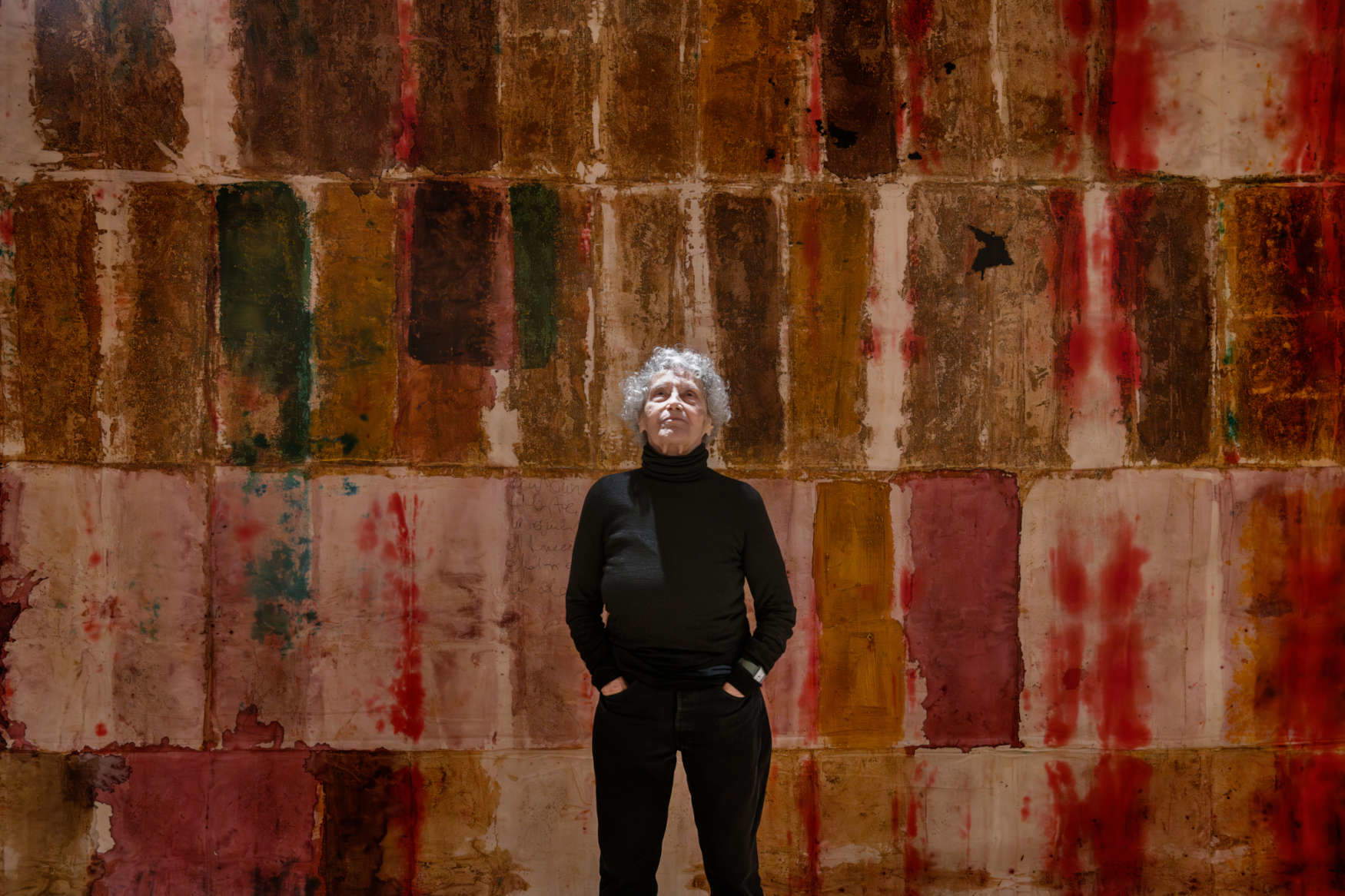
Renata Boero’s research is distinctively positioned on the boundary that separates the artistic gesture from the natural process. The artist does not limit herself to portraying nature, but conceptually reconstructs it, orienting her stylistic figure toward the interpretation of painting as a gesture that goes beyond the mere representation of reality. This approach manifests itself in the need to deepen and understand natural processes in relation to human action, leading to an overcoming of art understood as mere reproduction. “Nature is salvation, and the work of the arist is charged with a positively obsessive tension,” wrote Vittoria Coen. “Art is obsession of making, then, and it makes the work penetrate nature and receive as much energy from it, in an ideal fraternity, in an exchange, in which the sacredness and spirituality of the creative process itself testify to the will to protect the planet. The nature/culture relationship is so strong in her, as the work continues to live and revive spontaneously with the use of natural pigments, soils, roots, signs, which breathe and are reborn from the raw canvas that has embraced and protected them.”
His work is not the result of exclusive manipulation by the artist, but rather a collaboration in which organic matter is allowed to act and transform autonomously over time. His work becomes a means of transcribing the invisible, and the strength of his practice lies in a secular rituality and intuitive science, where painting manifests itself as an autonomous life process. The raw canvas, soaked in pigment, absorbs color and generates marks that give rhythm to the chromatic narrative, allowing time and memory to guide the interaction between nature and spirituality.

Renata Boero is distinguished by her intense exploration of the potential of pigments obtained from natural elements. Her art practice involves the use of roots, herbs, tubers and other organic components, which are treated by boiling and soaking them directly on the canvas. This process allows the canvas itself to absorb color, generating marks that give an intrinsic rhythm to the chromatic narrative. Boero’s research finds expression in large-format works characterized by latticework of dyes. In works such as Cromogramma Giallo (1970-1975), the horizontal composition is structured in four parallel bands of irregular rectangles, with colors ranging from deep yellow to deeper hues.
Similarly, in Chromogram Earth (1980-1990), the tones become warmer and the surface appears more textured due to natural pigments, evoking a strong connection with matter and the life cycle, and recalling processes of oxidation and decomposition. The pigments, often absorbed or transparently applied, allow the grain of the canvas and the traces of time to surface, highlighting how organic matter has had time to settle and transform itself independently. Boero does not simply use pigments as expressive tools, but lets them act, establishing a balance between his gesture and waiting for the matter to manifest itself. The work is thus born from the collaboration between matter and time, where color is not applied, but produced by the transformation operated by natural factors such as weather, humidity, heat and light, becoming co-authors of the work itself.
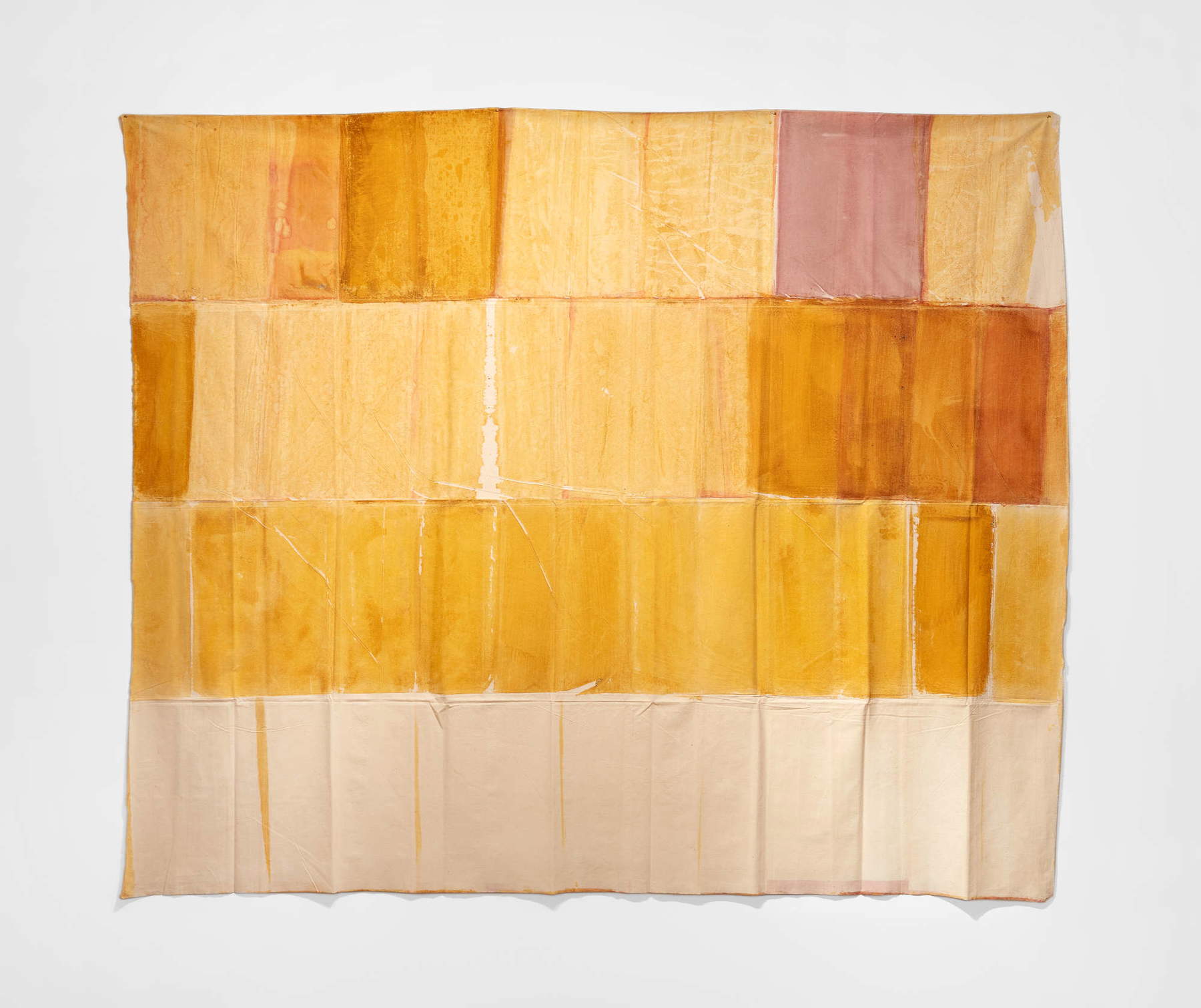
In Renata Boero’s works, time and memory are not mere accessory elements, but real protagonists guiding the creative process and the interaction between nature and spirituality. Her art is configured as an expression of time, silence and origin, where the transformation of matter over time is an essential component. The artist herself seeks a “suspension of time and space” through the rituality of her making, aiming to create a place where the objects of the mind and ordinary life are suspended. Her research, which began in the 1960s, matured in the second half of the 1970s and anticipated many instances in contemporary art, including a focus on process thinking. In works such as Chromograms, works are achieved through the direct action of nature on folded supports treated with plant components, where color is not applied but is the result of the transformation wrought by time, moisture, heat and light, which act as co-authors.
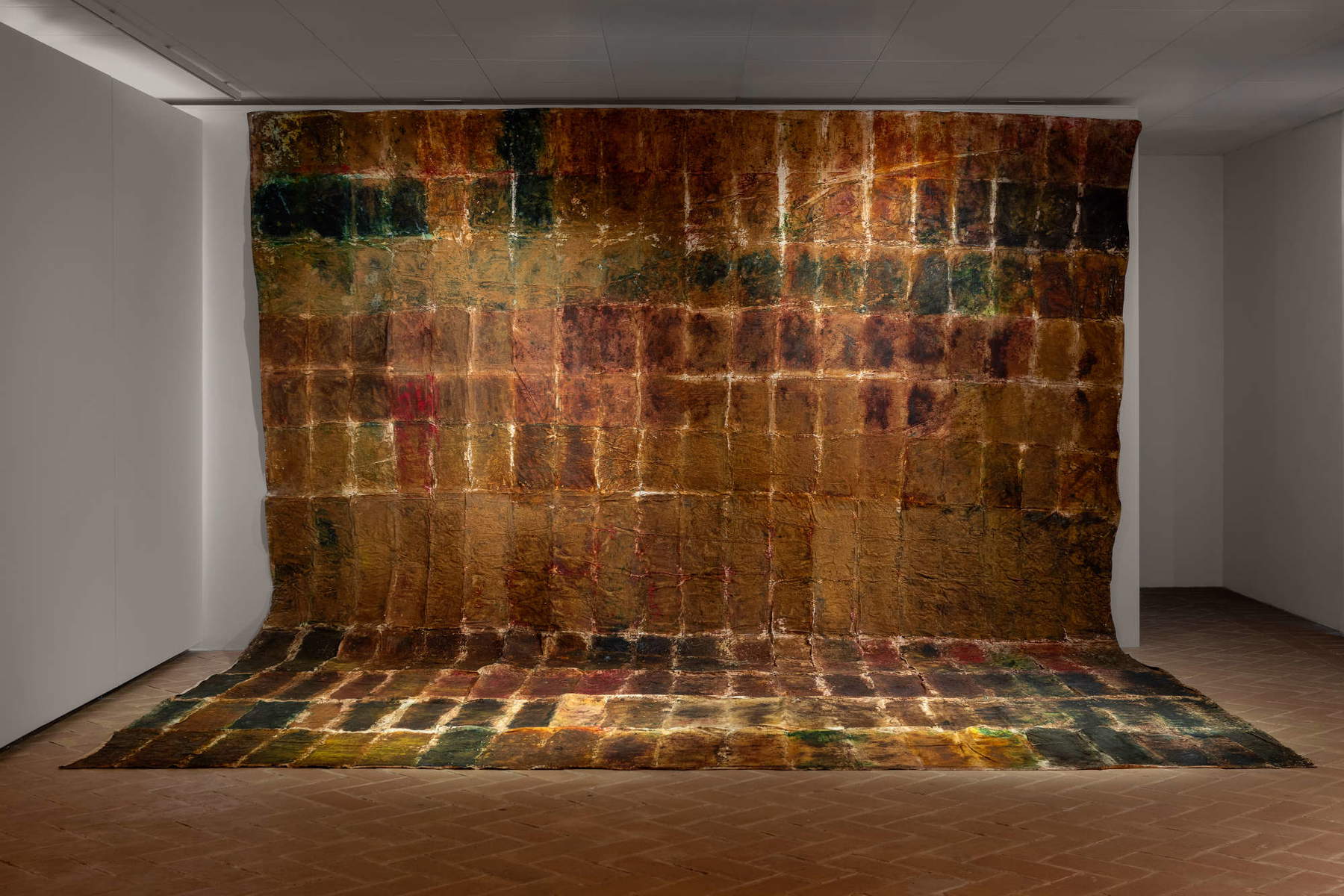
A fundamental concept in Renata Boero’s poetics is the “painting that renounces painting to become a natural event, a biological writing, a living archive.” This definition, proposed by Giuliana Pascucci, highlights the artist’s choice to go beyond traditional representation to allow nature itself to act as co-creator. This opposes the idea of an imposed art to embrace an art that “happens” and is spontaneously generated. Boero’s works are described not as simple works on paper or fabric, but as living processes, silent actions in which time, nature and the body act together. The artist seeks a unity between direct nature and nature recovered through painting, even “painting the earth with a piece of earth,” Pascucci further emphasizes. This approach anticipates contemporary instances, turning the work into a “sensitive archive that holds the memory of the world.” His art does not merely represent, but transcribes the invisible, with a strength that lies in the secular rituality and intuitive science of his work.
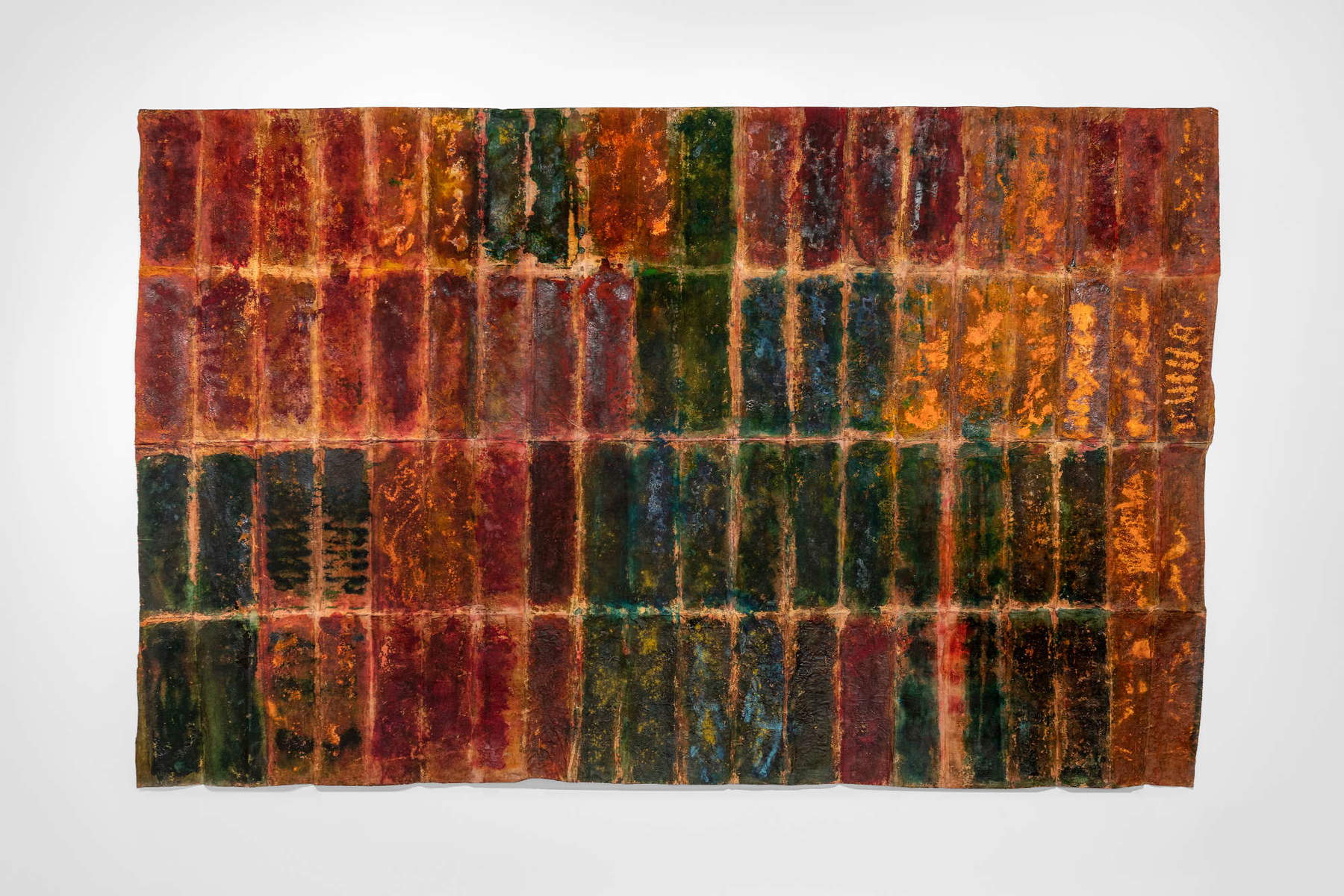
Renata Boero’s work is charged with a profoundly environmentalist meaning, rising to a poetic statement and, at the same time, a political gesture. Her art questions the present and proposes alternative visions, understanding politics as everything that concerns civil coexistence. Boero reevaluates the human relationship with the natural world, often abused and trampled by a technological progress that neglects its own side effects on the environment. He proposes a model of creation that, rather than stifling the ecosystem, enhances it, recognizing its inherent generative power. This is particularly significant in an age of climate crisis and hyper-productive imagery, where his works such as Chromograms and Ctò-nio-graphies are read as early ecological acts. They represent silent texts against speed and artificiality, offering forms of sensitive resistance. His work invites us to slow down our gaze, listen to the surfaces and allow ourselves to be touched by the vibration of physical substance, recognizing in it a form of nonverbal poetry. This perspective ties in with the idea of unspectacular curation, a writing of time that emphasizes how all transformation is a relationship, an act of listening and slowness. The sacredness and spirituality of her creative process testify to a clear desire to protect the planet.

Renata Boero’s artistic sensibility eschews rigid classifications, developing in parallel with but never fully assimilating into the various artistic movements of her time. Despite operating in a cultural context traversed by profound transformations and experimentation, the artist consciously chose not to adhere to codified movements, pursuing an autonomous research oriented toward universal themes such as time, nature and transformation. An affinity can be discerned with the work of Marcel Duchamp, particularly with the invention of the concept of Ready Made. However, while Duchamp recontextualized common objects, Boer turns to the natural world to elevate it to the role of agent in the creative journey, shifting the focus from the inanimate object to the organic process. This also distinguishes her from Arte Povera, which investigated primordial matter and minimal gesture; Boero moves on an autonomous path by introducing essential elements such as slow time, sedimentation and silence. His work was active and participatory in the paths of art and in the revolutionary and radical movements of the 1970s, a fertile period of political and cultural instances. His research has remained consistent and radical for more than fifty years, far from clamor and fashion, faithful to a vision in which art and nature meet in silence, matter and time.
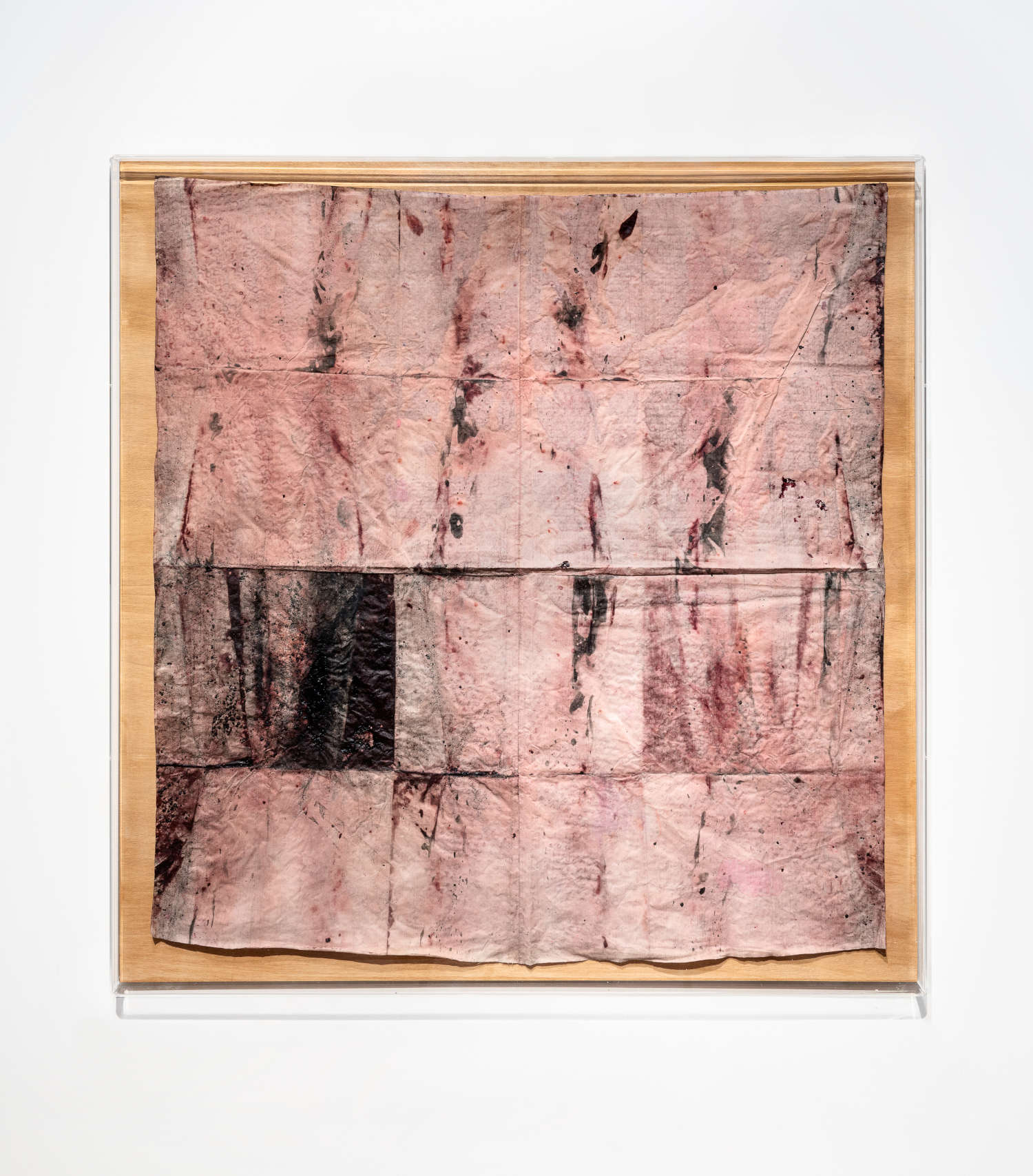
According to Vittoria Coen, Renata Boero’s art transcends mere aesthetic expression, serving as a bridge to a spiritual world. It represents a force, an energy, a total poetic statement and a constant becoming that embraces place and determines its transformations. Boero’s artistic gesture builds a veritable vocabulary of timeless emotions, expressing an “animistic creed at the dawn of the world,” Coen writes.
This spiritual dimension is manifested through the density of the color and the transport of the medium itself, the raw canvas, which lives a life of its own and allows the painting to make contact with the whole without mediation. The sacredness and spirituality of Boero’s creative process testify to his deep desire to protect the planet.

Renata Boero’s relationship with nature is deep and total, a real energy that emanates from the roots, both philosophically and aesthetically. This relationship manifests itself as a primordial dimension, a physical interpenetration between the human being and the universe, between man and the total system of living beings, which develops and regenerates continuously, from sleep to awakening, in an incessant becoming. His work recalls organic and natural processes, linking art, body and time in an alchemical process.
Exemplary in this sense is Fioritura 1 (1990-2000), which alludes to cyclicity, growth and transformation. This composition is presented as an organic mosaic composed of tiles that evoke natural elements such as barks, flowers and earth, with vibrant and intense colors. The composition seems to expand along a central axis, giving the impression that the canvas itself has absorbed nature, and the undulating surface resting directly on the floor amplifies the sense of direct contact with space and the viewer. Boero’s phrase “The natural elements came to me” sums up this visceral connection, confirming a relationship in which the artist relies on nature as an ally, experiencing complete and consistent immersion. Her work is charged with a positive tension, where the nature/culture relationship is so strong that the work itself continues to live and relive spontaneously through the use of natural pigments, soils and roots, which breathe and are reborn from the raw canvas.

Renata Boero’s artistic practice is imbued with a profound rituality of gesture, which is not only a technical component but a structural and poetic element of her work. Through this rituality, the artist aims to create a “suspension of time and space,” a place where the objects of the mind and ordinary life are in a state of suspension. This “silent writing” interrogates matter, time and nature in their deepest dimension. The silences themselves, in his art, speak and inspire those who know how to listen inwardly. His art does not impose itself, but “happens” and is generated spontaneously, often in a context of solitude and meditation.
The backgrounds and folds of his canvases, the whole process, speaks of an enveloping breath and the search for wholeness. It is a condition in which the inexorability of natural matter, once all linguistic mediation is abandoned, directly accompanies life. His art is defined as an expression of silence and origin, manifested in the gesture and transformation of the material itself.
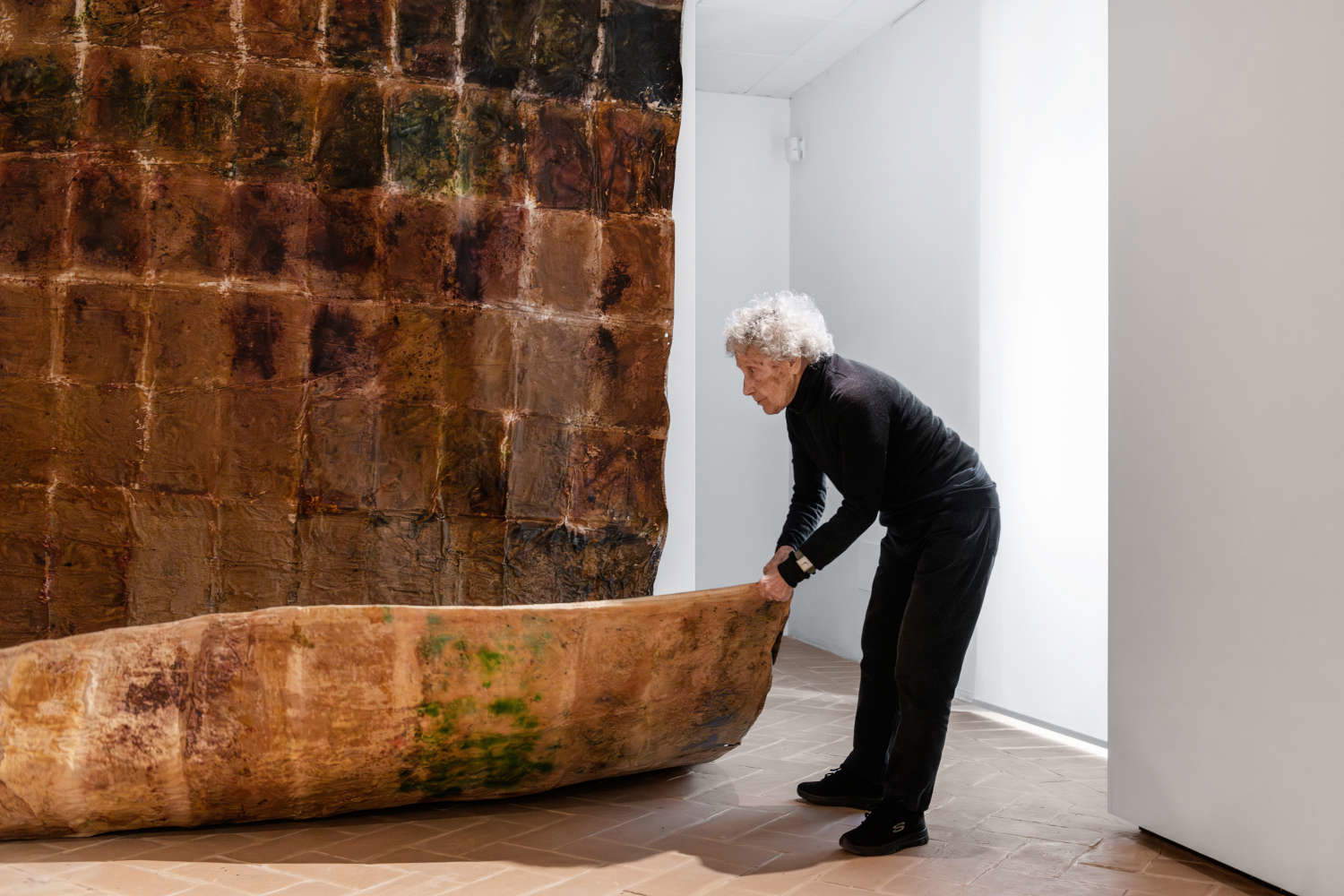
Renata Boero’s work, developed since the 1960s, significantly anticipates many instances in contemporary art, such as ecological attention, process thinking, rediscovery of the feminine gesture, and listening to the living.
Today, in the midst of the climate crisis and the hyper-productivity of the image, and in a contemporary landscape that discovers the post-human, her art appears very relevant. His Chromograms and Ctò-nio-graphies are not only works of art, but are read as early ecological acts, according to Pascucci “silent texts against speed and artificiality,” proposing forms of sensitive resistance. His research offers valuable tools to rethink our relationship with the world, the body and the earth. Boer, through his work, reminds us of the power of the hidden, the poetry of process and the “politics of waiting.” His art does not represent the world, but transcribes it in a “writing of time” that reminds us that all transformation is inherently a relationship, an act of listening and slowness.
Warning: the translation into English of the original Italian article was created using automatic tools. We undertake to review all articles, but we do not guarantee the total absence of inaccuracies in the translation due to the program. You can find the original by clicking on the ITA button. If you find any mistake,please contact us.